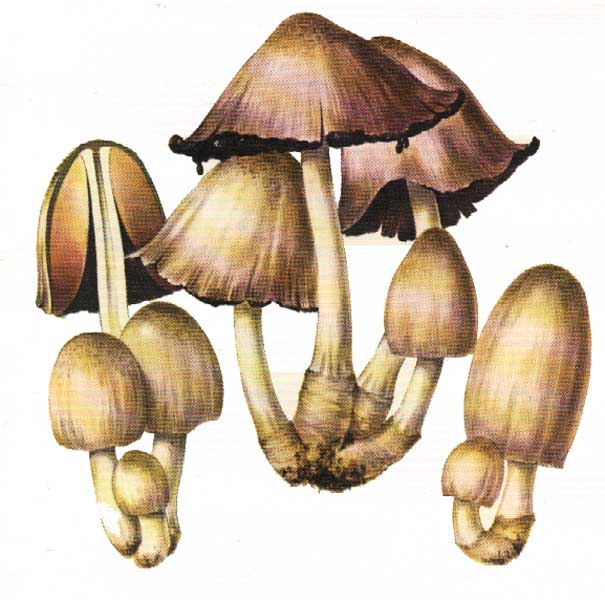
COPRINUS ATRAMENTARIUS (Ink coprinus)
Cap ovoid, then campanulate, 3-6 cm, soon with radial striae, grooves and crevices; whitish, then cinereous or yellowish; tinged with purple when the gills ripen. Stem cylindric, white; soon fibrillar, sericeous, and a little darker; hard, fibrous, hollow. Ring soft, whitish, appressed, evanescent. Flesh cinereous white, thin; however the mushroom gives the impression of being heavy. Odor and flavor agreeable. Gills very close, broad, free from the stem; whitish, then, beginning at the marginal portion of the cap, the color changes to brownish, violaceous, black; finally the gills dissolve into a dense, black liquid that drips at the base of the mushroom (deliquescent gills). Spores black. It grows throughout the year, except in the coldest months, in dense clusters, in cool, shady, grassy ground, manured with organic fertilizers; often also in parks and gardens, under fruit trees. Edible with caution: only when young and eaten as soon as collected, avoiding the use of alcohol in the meantime; otherwise it can cause palpitations of the heart, perspiration, chilled limbs, and other symptoms of illness, which however soon disappear without consequence. Coprinus fuscescens, edible with caution, is considered a more gracile form of atramentarius. Coprinus insignis differs from astramentarius only for a few microscopic peculiarities; edible with caution as the previous species.